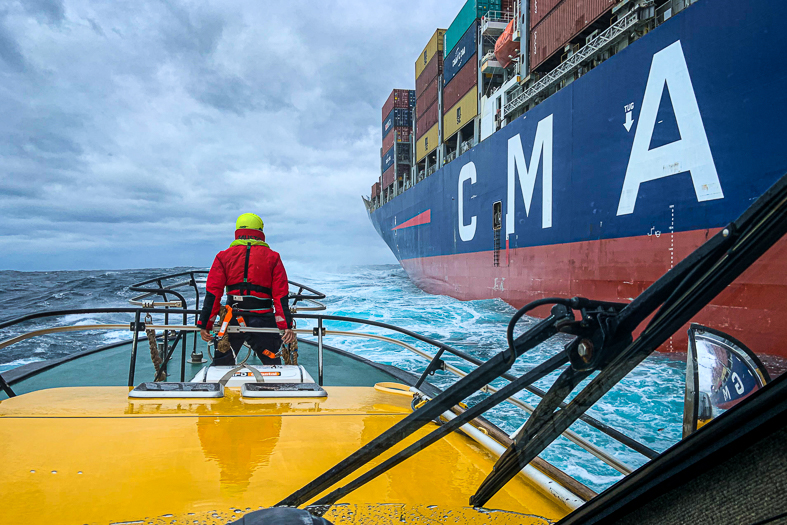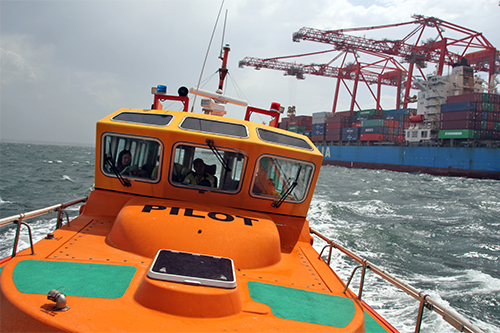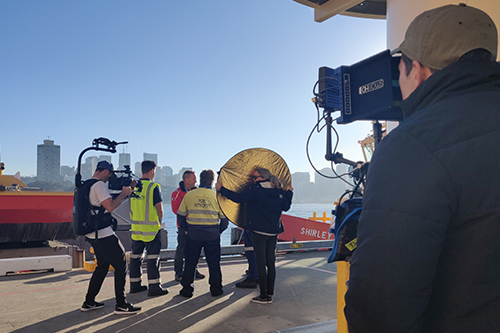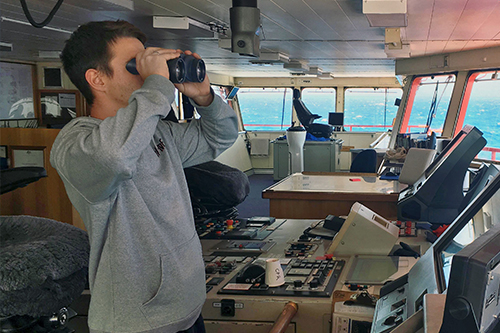27/03/2018 02:43 PM
Marine pilots: keeping ships safe in Sydney for 225 years
Marine pilots have been helping ships navigate safely through Sydney Harbour for more than 225 years. Here’s how marine pilots keep ships safe and why the pilotage service is still essential to New South Wales’ maritime safety over two centuries later.
Pilotage is an ancient profession that has been essential to shipping since Ancient Greece. In Sydney Harbour, pilots have been guiding ships into Port Jackson since 1792 and have played a significant role in helping Sydney develop into the city it is today.
Robert Watson, a British sailor and quartermaster of H.M.S. Sirius of the First Fleet, became one of Sydney’s first official pilots in 1811. Watson, who would later go on to become Harbour Master, gave his name to Watson’s Bay, which became the location of Sydney’s first permanent pilot station in 1957.
In the early days, pilots reached arriving ships by oar-powered whaling boats. As Sydney developed, trade increased and ships became larger, there was a need for tighter legislation.
By 1833, all vessels entering and leaving the harbour had to engage the services of a pilot and by 1875, Sydney had its first dedicated pilot vessel, the steamer ship Thetis.
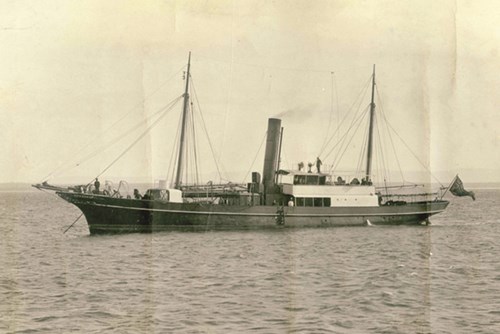 Image: The Thetis, the first dedicated pilot vessel in Sydney
Image: The Thetis, the first dedicated pilot vessel in Sydney
Fast forward to today and pilots in all the trading ports of New South Wales are as necessary as ever.
Meet Michael Kelly who has been working as a marine pilot for Port Authority for almost 10 years.
Each year, pilots and cutter (vessel) crew from the Port Authority of New South Wales perform thousands of transfers, helping to bring cruise ships, cargo ships and tankers safely into port – carrying on a 225-year-old service that’s almost as old as the city itself.
Modern ships are giants. They are hard to manoeuvre, very slow to stop and can contain up to 150,000 tonnes of cargo. Their safe passage is essential for the safety of ships, people, infrastructure and the environment.
Marine pilots are highly skilled and experienced master mariners who provide local knowledge to international ship’s masters and assist large ships to safely navigate and manoeuvre their way through the channels of ports and harbours.
To become a master mariner and expert ship handler, marine pilots require a detailed knowledge of local conditions and environments they work in. It can take two to two-and-a-half years of piloting before a pilot can move large container and cruise ships such as Ovation of the Seas.

Image: A Port Authority pilot gets ready to board a ship by helicopter transfer
In order to become expert ship handlers, pilots are required to undertake ongoing simulation training as well as manned model training and tug observations.
See how marine pilots train in simulators in Sydney Harbour.
In the Port of Yamba, Sydney Harbour, Port Botany, Port Kembla and Port of Eden, pilot cutters (vessels) are used to transfer pilots to the ship where rope ladders are used to climb up to the ship above.
Physical strength and skill is required to climb the ladder from a pitching pilot cutter especially in windy and inclement weather conditions, or at night. In winter, swells up to eight metres are common and there are times when the swell and seas are too dangerous and pilotage is suspended.
In these ports, pilots meet their inbound ship at the pilot boarding ground, four nautical miles from the port. In Newcastle, helicopters are used for a pilot’s transfer. This is possible because the predominantly coal and grain ships that visit that port can receive a helicopter directly onto their decks. In the other ports, container, bulk and general cargo ships cannot accommodate a helicopter pad.
Once aboard, the pilot makes their way to the bridge to advise the Captain of the intended passage plan before taking navigational control of the vessel. And while these essential master mariners are at the helm, we look forward to continuing safe navigation and pilotage over the next 225 years.




